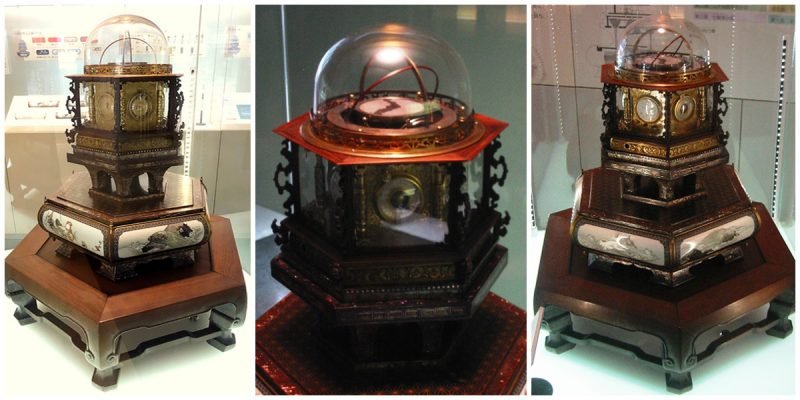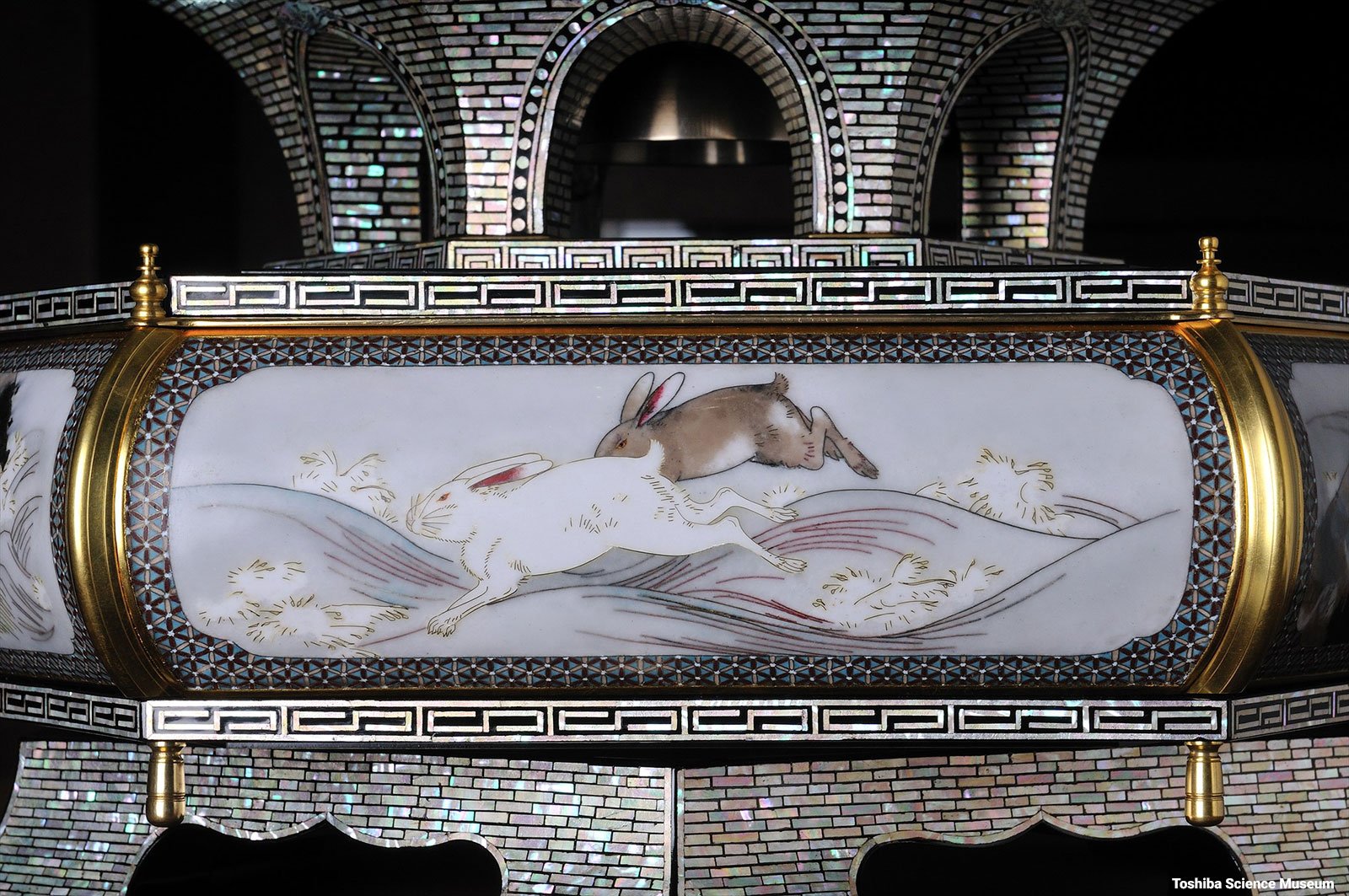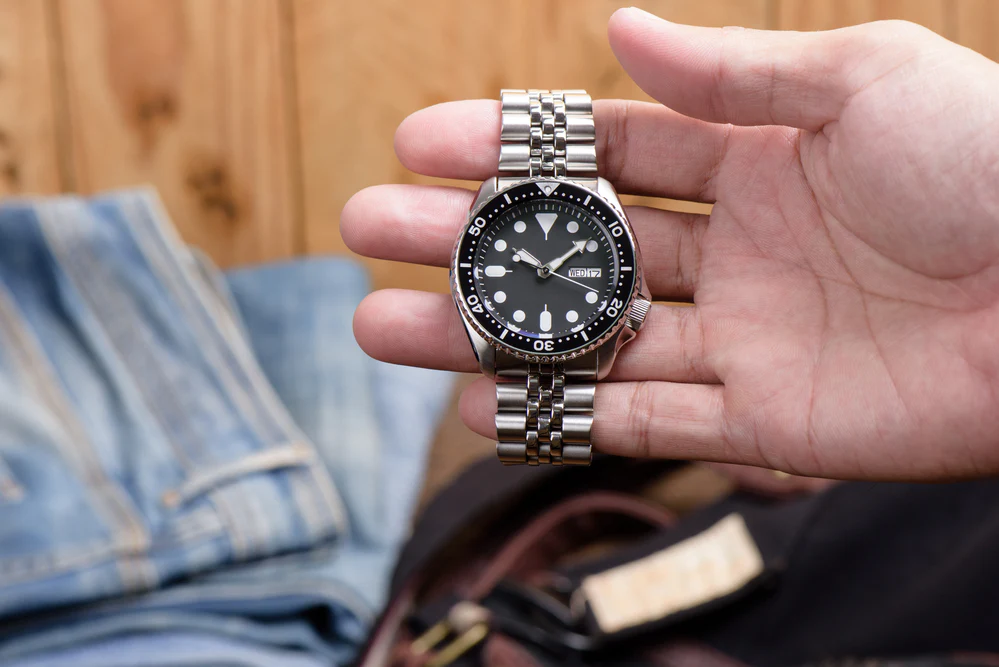Japanese clocks have a rich and fascinating history, reflecting the evolution of timekeeping technology and cultural influences. From ancient water clocks to sophisticated modern designs, the development of Japanese clocks showcases a blend of traditional craftsmanship and technological innovation. This article explores the historical journey of Japanese clocks, highlighting key milestones and their cultural significance.
Early Timekeeping in Japan
Ancient Timekeeping Methods
Water Clocks: The earliest known timekeeping devices in Japan were water clocks, or “suisoki.” These devices used the steady flow of water to measure time. Water clocks were introduced to Japan from China and Korea, and they were used primarily in Buddhist temples and by scholars.
Sundials: Sundials, which measure time by the position of the sun, were also used in ancient Japan. These devices were simple but effective in marking the passage of time during daylight hours.
Introduction of Mechanical Clocks
Early Mechanical Clocks: Mechanical clocks were introduced to Japan in the 17th century. They arrived via trade with the Dutch and Portuguese, who brought advanced timekeeping technology from Europe. The introduction of mechanical clocks marked a significant shift from traditional timekeeping methods.
Wadokei: The “wadokei” was one of the earliest types of mechanical clocks used in Japan. Developed during the Edo period (1603-1868), these clocks were influenced by both Western and Chinese designs. The wadokei featured intricate mechanical systems and decorative elements, reflecting the fusion of cultural influences.
The Edo Period and Craftsmanship
Development of Japanese Clocks
Cultural Integration: During the Edo period, Japanese clockmakers began to adapt and refine Western clock designs to suit Japanese tastes and requirements. This period saw the emergence of various types of clocks, including wall-mounted and mantel clocks.
Artistic Craftsmanship: Japanese clockmakers were known for their exceptional craftsmanship. Clocks from this period often featured ornate carvings, lacquered surfaces, and intricate designs. The fusion of functional mechanics with artistic aesthetics became a hallmark of Japanese clockmaking.
Notable Clocks
Kakei: The “kakei” is a type of wall-mounted clock that became popular during the Edo period. It was known for its elegant design and pendulum mechanism. Kakei clocks often featured decorative elements such as floral motifs and traditional Japanese patterns.
Tokei: The term “tokei” refers to Japanese clocks in general. During the Edo period, various styles of tokei clocks emerged, each reflecting the craftsmanship and artistic preferences of the time. These clocks played a significant role in daily life and cultural practices.

Modernization and Innovation
20th Century Advances
Introduction of Quartz Clocks: The 20th century brought significant advancements in clock technology with the introduction of quartz clocks. Quartz clocks, which use electronic components to measure time, revolutionized timekeeping by offering greater accuracy and reliability.
Modern Designs: Japanese clockmakers continued to innovate, incorporating modern materials and technologies into their designs. Contemporary Japanese clocks often feature minimalist aesthetics, digital displays, and advanced features while maintaining a connection to traditional design principles.
Global Influence
International Recognition: Japanese clocks gained international recognition for their precision, design, and quality. The influence of Japanese clockmaking extended beyond Japan, inspiring designers and collectors worldwide.
Cultural Impact: Japanese clocks continue to reflect the country’s cultural heritage and technological prowess. They are celebrated for their ability to blend traditional craftsmanship with modern innovation, making them cherished items for collectors and enthusiasts.
Conclusion
The history of Japanese clocks is a testament to the evolution of timekeeping technology and cultural integration. From ancient water clocks to modern quartz timepieces, Japanese clocks have undergone significant changes while maintaining their artistic and functional qualities. The journey of Japanese clocks highlights the country’s dedication to craftsmanship, innovation, and the preservation of cultural heritage. Whether through traditional mechanical designs or contemporary innovations, Japanese clocks continue to capture the essence of timekeeping with elegance and precision.





Ein weiterer Casino-Bonus, der sich großer Beliebtheit erfreut, sind Freispiele ohne Einzahlung.
Der Casino Bonus mit Einzahlung – auch Deposit Bonus genannt – ist der wohl am meisten verbreitete und beste Casino Bonus
den man erhalten kann. Meist geschieht dies in Form eines Echtgeld Guthaben oder durch Freispiele ohne Einzahlung.
Ein Boni ohne Einzahlung ist zwar selten, wird aber dennoch von einigen Casinos angeboten. Willkommensboni sind normalerweise mit Casino-Bonusbedingungen verbunden,
die erfüllt werden müssen, bevor die Gewinne ausgezahlt werden können.
Wir haben die besten Online Casino Willkommensbonus Angebote Deutschlands für Sie verglichen, damit Sie einfach und unkompliziert den richtigen Bonus für sich wählen können. Wie bei einem Neukundenbonus sind diese
Boni meist an Umsatzbedingungen gebunden. Falls Sie den Bonus nun vor der Vollendung der jeweiligen Umsatzbedingungen stornieren möchten, erhalten Sie
in der Regel das verbliebene Echtgeld zurück. Wenn Sie sich zum ersten Mal
registrieren, haben Sie jedes Mal Anspruch auf einen Online Casino Neukundenbonus.
Im klassischen Sinne handelt es sich dabei um geschenktes Guthaben, aber auch Gratis-Freispiele könnte man im weiteren Sinne dieser Kategorie zuordnen. Im Artikel haben wir uns auf Spurensuche begeben und 25
Euro als Willkommensbonus ohne Einzahlung gesucht.
Das gängigste Angebot unter den No Deposit Boni sind Freispiele ohne Einzahlung.
Wir könnten auch behaupten, dass es eine Menge toller Tricks gibt,
wie man unendlich viel Casino Bonus ohne Einzahlung als Echtgeld abstauben kann.
Handelt es sich um das eigene Lieblingsspiel oder einen Titel,
für den man sich schon immer interessiert hat, wird man die Freispiele sicherlich gern nutzen. Der wesentliche Unterschied zwischen dem gratis Startguthaben und einem kostenlosen Freispielbonus ist die Vorgabe des
Spiels, die es bei den Free Spins gibt. Bevor diese Gewinne
wirklich Dir gehören, müssen sie genau wie alles
Bonusgeld erst entsprechend den Konditionen mehrfach umgesetzt werden.
Eine beliebte Alternative zum No Deposit Startguthaben sind etwa Freispiele ohne
Einzahlung. Daher kommt dem gratis Neukundenbonus
eine wichtige Rolle zu, denn nur wenn dieser attraktiv ist, werden sich viele Spieler registrieren. Mit
einem gratis Bonus über 10 Euro kannst Du nicht nur unverbindlich Deine ersten Runden im Casino drehen, sondern auch etwas
gewinnen.
References:
https://online-spielhallen.de/umfassender-ratgeber-zur-bwin-casino-auszahlung/
From reload perks and cashback bonuses to free spins and time-limited jackpots, promotions refresh continuously to match
your gaming rhythm. Crypto players enjoy anonymity and high limits, while
fiat methods offer structured flexibility
and instant recognizability. We support both low-stakes players and high-rollers, offering
limits from $20 up to $10,000+ per transaction. Our
cashier is streamlined to reflect the habits and preferences of modern players, giving you full control over
deposits, withdrawals, and bonus triggers. You can filter games by volatility, payout speed, bonus frequency, or
your current balance, so every spin counts. Whether you’re
into classic reels or crave the tension of a live dealer face-off,
our 14,000+ titles cover every mood and style of play.
However, for other common tools like setting deposit limits, session time limits, or time-outs,
you’ll need to reach out to customer support. If you’re already dabbling in crypto,
cashing out your casino winnings can be a seamless process.
For Aussie players, embracing crypto can mean faster transactions and potentially
lower fees compared to traditional banking methods. This isn’t
uncommon for online casinos these days, especially with heftier payouts.
Premier online gaming with 14,000+ games, from classic slots
to live dealer tables. Access slots, classic tables, and live dealer games directly
from your mobile device with smooth transactions and dedicated support.
Our casino offers a premium selection of games, including slots, poker, and live dealer options, ensuring
endless entertainment for enthusiasts. For a more realistic casino experience,
try the live dealer games, where professional dealers host games in real-time.
Lucky ones offers a fantastic gaming experience with a wide
array of slots and table games. Dive into a world of over 5000 games, live casino tables,
and quick sports betting—perfectly adapted for smooth play
on Android, iOS, or any browser.
References:
https://blackcoin.co/australian-online-casino/
Okada Manila is located along New Seaside Drive in Entertainment City, in the bustling city of Parañaque,
part of Metro Manila. Discover top Okada Manila amenities, must-visit
attractions, and a wide selection of activities, and day passes to
help you enjoy everything the resort has to offer. Whether it’s a
date night, family bonding, or a fun outing with friends, there’s an Okada Manila day tour for you.
Whether you’re planning a romantic getaway, a festive holiday break, or a
fun-filled escape, there are countless things to do in Okada
Manila.
Strategically located in Pasay, Resorts World is not
just a gaming hub but a complete entertainment complex. A
recent visitor to the Solaire Resort & Casino shared, “The service here is fantastic, and the gaming experience is top-notch. Solaire Resort & Casino, one of the biggest casinos in the Philippines, stands as a beacon of refined leisure and thrilling gaming in Manila.
The casino features over 1,200 slot machines and nearly 300 table games, offering a diverse gaming experience for all types of players. These easy chicken recipes use minimal ingredients and techniques, making them great for first-time cooks. This cheesy chicken pasta casserole is perfect for a busy weeknight when you need a fast and easy dinner with minimal cleanup. This easy one-pot mac & cheese recipe gets an extra boost of protein from chicken. The creamy feta dressing steals the show in this protein-rich salad, which makes a perfect lunch or quick and easy dinner. The sauce in this creamy balsamic chicken and mushroom skillet recipe strikes the perfect balance of acidity and sweetness.
References:
https://blackcoin.co/find-your-best-casino-online/
Much like playing online casino games, investing in cryptocurrencies can be an exhilarating and volatile ride.
Online casino bonuses can be an integral part of a person’s online gambling experience.
It is the case for every Australian online casino player that all top online casinos are built differently.
10 free spins daily for 10 days. The welcome package consists of 3 deposits.
A minimum deposit of £25 is required to qualify.
This article cuts through the noise to spotlight platforms
that meet strict industry standards and have earned player trust over time.
Third, you are free to go to the casino and make sure you verify that everything is just
as it was supposed to be. To end this article on a high note, we want
to give you a quick 3-part guide on how to get started with choosing a casino.
Yes, many online casinos have mobile-friendly websites or apps
that allow you to play games on your mobile device.
That’s why aside from top lists of the best Australian online casinos real money, we also provide in-depth information about the best
bonuses you can claim. Online casinos in Australia for real money are gambling platforms that allow players to enjoy games of
chance and win real funds in the process. Starting your real money gaming journey at online casinos can seem like
a chore but it’s actually quite a straightforward process.
Sign-up bonuses, also known as welcome bonuses, are the
most common type of reward offered by real money casinos
to attract new players.
References:
https://blackcoin.co/lakeside-inn-and-casino-an-in-depth-look/
Cancellations or changes to the reservation outside of the applicable notice
periods or no shows may incur a fee of up to $50 per person charged to the credit card provided
to secure the reservation. For groups between 13 and 29
people please refer to your confirmation SMS or email
for simple adjustment options at least 72 hours before your reservation time.
For groups of 12 or less, if you wish to cancel or reduce the size of
your reservation, please refer to your confirmation SMS or email for
simple adjustment options at least 12 hours before your
reservation time. All credit card information will be
processed securely. Full pre-payment is required for all special offers, set menus and
where a minimum spend is required. Credit or debit card details
are required to guarantee all reservations.
And while Victoria may boast the country’s
top casino, there’s plenty to enjoy at home on your computer without
even leaving your front room. Funds may be verified but no
charges will be debited from your card at the time of reservation unless
pre-payment is required. Discover all the finer details to make
your time at Crown Melbourne seamless and enjoyable.
And dive into world-class gaming and entertainment experiences.
References:
https://blackcoin.co/betway-login-my-account-in-south-africa-2025-step-by-step-opening-guide/
paypal casino android
References:
rejobbing.com
casino avec paypal
References:
https://cvbankye.com
us online casinos paypal
References:
westorebd.com
online casino for us players paypal
References:
worlancer.com
online betting with paypal winnersbet
References:
skillrizen.com